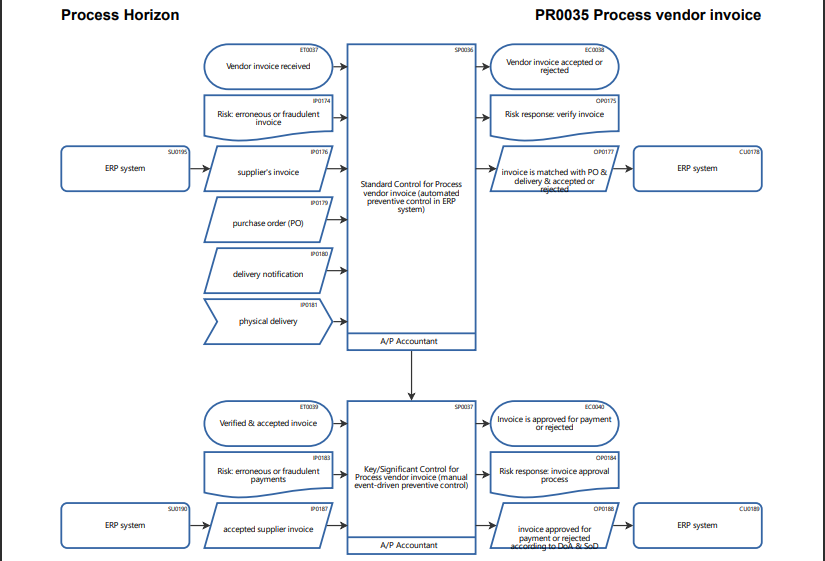Mapping process risks & controls

Process controls are a set of procedures, policies, and mechanisms put in place within an organization to ensure that its processes operate effectively, efficiently, and in accordance with established goals, regulations, and standards. The primary purposes of process controls are:
- Risk Management: Process controls help identify, assess, and mitigate risks associated with various business processes. They provide safeguards against potential errors, fraud, and operational inefficiencies.
- Consistency & Quality: Process controls ensure that activities are carried out consistently and that the quality of outcomes meets predefined standards. This consistency helps maintain customer satisfaction and organizational reputation.
- Compliance: Process controls help organizations adhere to laws, regulations, and industry standards. They provide evidence that the organization is operating in a legally and ethically sound manner.
- Efficiency: Well-designed process controls optimize workflows and resource utilization. They eliminate unnecessary steps, reduce waste, and enhance the overall efficiency of operations.
- Accuracy: Process controls minimize the likelihood of errors and inaccuracies in data and reporting. This is crucial for making informed decisions and maintaining the integrity of financial and operational information.
- Accountability: Controls assign clear responsibilities and accountabilities to individuals or teams, ensuring that tasks are performed by the appropriate personnel.
- Reporting & Transparency: Process controls facilitate accurate and transparent reporting. They enable organizations to provide stakeholders with reliable information about their performance and financial status.
- Continual Improvement: By monitoring processes and their associated controls, organizations can identify areas for improvement and make adjustments to enhance performance over time.
Process controls, including SOX controls, serve to ensure the effectiveness, efficiency, transparency and accountability of organizational processes as well as compliance and accurate financial reporting.
In the use case provided, process risks & controls for the vendor invoice processing process are modeled and mapped on its subprocess level.
Explore the smart ProcessHorizon web app for comprehensive SIPOC process as well as risks & controls mapping: https://processhorizon.com

